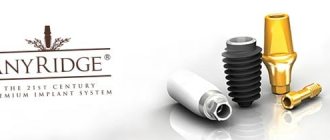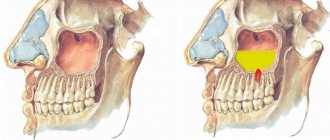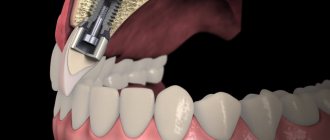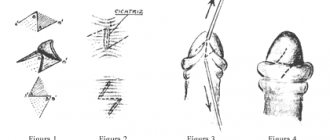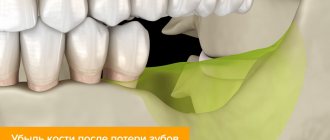Bleeding is one of the most dangerous complications in dental surgery and can occur both during and after surgery. Patients requiring any type of bone grafting should always be informed by the dentist about the possible risks and precautions that must be taken during the rehabilitation period. Sinus lifting and other osteoplasty options, thanks to innovative surgical techniques and high-tech equipment, are safe and are accompanied by a low risk of bleeding.
To keep the patient as safe as possible, a thorough preoperative assessment is performed to rule out conditions that predispose to bleeding during or after surgery. The dentist also instructs the patient in detail on how to behave after the operation and what restrictions should be followed. The appearance of bleeding or spotting from the area of a postoperative wound should always be treated with caution. In some cases, you can eliminate increased bleeding yourself at home, while in other cases, qualified medical care is necessary.
How often does bleeding occur after bone grafting and sinus lifting?
Every person has experienced bleeding of varying severity at least once in their life. Bleeding is always accompanied by a violation of the integrity of the skin and other tissues in the body. Intense bleeding is a life-threatening condition and requires immediate stopping using special methods. In other cases, when the bleeding is small, the body's compensatory systems are triggered, which contribute to the formation of local microthrombi and the cessation of blood loss from the bleeding vessel.
Any osteoplastic operation, even such a microsurgical and minimally invasive one as a sinus lift, is accompanied by some damage to tissues and blood vessels and, naturally, it is accompanied by bleeding.
Controlled bleeding during surgery is a planned natural reaction of the body to tissue damage and can be easily and instantly stopped in an operating room. The severity of bleeding directly depends on the volume of the operation, its traumatic nature, and the number of implants being implanted. However, during sinus lifting and other osteoplastic surgeries, blood loss is minimal and does not affect the functioning of the body and the person’s well-being. Typically, the operation is bloodless and easily tolerated by patients.
After surgery, in the first few days it is considered normal to release a small amount of blood or ichor from the area of the postoperative wound. Also, the body’s natural reaction is:
- Pain in the surgical area, easily relieved with painkillers;
- Swelling, but not more than three days;
- Increase in body temperature to subfebrile levels (about 37-38);
- Hyperemia of tissue around the postoperative wound;
The above phenomena, during the normal course of the postoperative period, do not cause significant discomfort to the patient and are easily relieved with the help of the treatment prescribed by the surgeon. Positive dynamics should also be noted, that is, bleeding, swelling, pain and other unpleasant symptoms should subside within 3-7-10 days, depending on the complexity of the operation. Therefore, before undergoing a sinus lift or other type of bone grafting, you need to be prepared for the fact that at first there will be minor bleeding, swelling and pain, and not to panic if such symptoms appear.
First aid for yourself if blood is already flowing
Bleeding from the gums may not seem catastrophic, but it is still not a reason to lose blood, especially since the patient is unlikely to drop everything and immediately go to the dentist. Even if the bleeding seems severe, the first task is to calm down and take care of stopping it here and now. There are several ways to do this:
- cool the bleeding area - apply ice to the outside of your cheek for 15-20 minutes;
- press the wound (but not too much!) with a piece of bandage or a gauze cloth - also for 20 minutes;
- hold cold water in your mouth, making a “bath” for the bleeding area - usually 5 minutes is enough, but you can repeat it if it doesn’t help the first time;
- soak a black tea bag in water and apply it to the wound in your mouth;
- Apply the medications recommended by the doctor to the operated area.
If bleeding begins after a period of calm, and it cannot be calmed down for a long time for at least a day, this is already a sufficient reason to seek advice from a dentist.
When is bleeding dangerous?
The risk of massive bleeding during bone grafting is extremely low, since during the preoperative diagnosis the doctor excludes conditions against which this dangerous complication may develop. Therefore, you should not worry about bleeding during a sinus lift or other surgery. Thanks to several decades of experience, modern technologies and drugs, bone grafting is a quick and safe procedure that does not pose a threat to the patient’s life.
However, bleeding may occur later, at home, several days or even weeks after surgery. There are two main pathological conditions in which bleeding may occur after sinus lifting and bone grafting - vessel damage, hypertensive reaction, peri-implantitis and implant rejection.
Doctor's instructions after implantation
In order for the implant to take root without any problems, it is important to strictly follow all the doctor’s recommendations. The list of tips usually looks like this:
- the first two hours after the operation are especially critical - during this time you cannot eat at all, even on the other side of the jaw, and you can only drink water at room temperature, in no case sweet or carbonated, not hot or ice-cold;
- until the wound heals normally, you should refuse any solid food - it should be liquid or semi-liquid, neither hot nor cold, and you will have to forget about sour and spicy dishes for now;
- Overheating of the body in the coming days is contraindicated, therefore no beaches, baths, solariums, saunas or hot tubs;
- the sutures should not be touched either with your hands or even with your tongue; it is also advisable not to send food into the operated part of the mouth;
- physical activity during the recovery period is not recommended;
- alcoholic drinks are prohibited both because of their ability to corrode wounds and because they generally weaken the body, which is actively recovering;
- You cannot brush your teeth immediately after surgery - wait until the doctor gives permission;
- permission to brush your teeth does not mean that hygiene now needs to be maintained hyperactively - do not overdo it, otherwise you can open the wound;
- no unauthorized rinses are allowed - only those recommended by the doctor himself;
- The oral cavity must be maintained in an ideal sterile condition.
Strict adherence to these rules is your best guarantee that you will not have to deal with adverse events in the form of severe bleeding after implantation.
Hypertensive reaction
In cases of sinus lift surgery performed on a patient with hypertension, there is always the possibility of a delayed increase in pressure when the patient returns home or after 12 hours. To prevent such reactions, our in-house anesthesiologist performs preparation and surgery in a state of light sedation to exclude a psycho-emotional reaction with an increase in pressure during treatment and 24 hours later. Combo sedation guarantees 100% delayed hypertensive surges in the anesthesiology department.
Forewarned is forearmed
Despite the extensive list, all types of complications, as we said earlier, are rather exceptions to the rules that you should be aware of, but you should not be afraid of them. By choosing the Golden Section dental clinic, which has extensive experience in performing dental implantation surgery, you minimize the likelihood of complications.
Notes
- Sinusitis is inflammation of the mucous membrane of the maxillary sinus. Manifested by increased temperature, pain, and nasal congestion.
- Computed tomography is a method of layer-by-layer examination of internal organs using x-rays.
- Orthopantomogram is an overview, general photograph of all teeth and jaws using x-rays.
- Guide templates are specially made plastic caps with a hole. When applied to the gum, they help determine the location and direction of bone treatment.
- 3D implantation planning is performed using a specific computer program, which, based on the patient’s data, creates a computer volumetric model of the jaw and allows you to analyze in detail all the stages of implantation.
- Hypertension (arterial hypertension) is a persistent increase in blood pressure.
- According to the international company Nobel Biocare Russia.
Peri-implantitis and bleeding
One of the most dangerous and severe inflammatory processes in the oral cavity is peri-implantitis. It occurs when trying to combine bone grafting or sinus lifting with implantation under unfavorable conditions. Inflammation develops around an installed dental implant and, if treatment is not started in a timely manner, can lead to serious consequences. The main reasons for the development of this pathology are non-compliance with the technique of surgical intervention and implantation, inadequate sanitation of the oral cavity before the procedure, or the use of low-quality structures for implantation.
The development of such a pathological condition can be suspected if the patient experiences severe pain and swelling in the implant area, increased bleeding of the gums, suppuration (with the addition of a bacterial infection), and impaired implant fixation. Bleeding against the background of the above symptoms is a dangerous sign, so you should immediately consult a doctor. The most severe consequence of the disease is bone tissue atrophy, which subsequently requires surgical correction. Treatment for this pathology should be aimed at eliminating inflammation and foci of infection in the oral cavity.
Bleeding in such conditions occurs a week after surgery in a state of complete rest and without any irritants.
Treatment
An x-ray allows the dentist to understand exactly what the problem is. Mostly, complications are caused by inflammatory processes. Anti-inflammatory therapy, antiseptic surface treatment, and hygienic care are carried out.
In case of peri-implantitis, inflamed tissue is removed, the pin is cleaned and treated with an antiseptic.
In some cases, complications after dental implantation require removal of the post. For example, if the implant breaks, it is rejected, or treatment of inflammatory processes is not successful.
The implant is removed by carefully twisting it out of the bone, trying to minimize trauma to surrounding tissue.
The issue of re-implantation is considered in each case separately. Most often, a two-stage protocol is impossible without bone grafting. But with the one-step method, you can do without it. In any case, you will have to wait until the inflamed tissues recover. However, it should not be delayed to avoid bone loss.
The decision to re-implant after removal of a dental implant must be made by the doctor. It takes into account all the factors necessary for the success of the operation. If rejection is caused by biological reasons, low immunity, smoking, then the positive result of re-implantation is in doubt and it is better to use alternative prosthetic methods.
Implant rejection
The materials from which implants are made in modern dentistry are, in the vast majority of cases, normally accepted by the body's defense systems. Therefore, the risk of implant rejection after sinus lifting and bone grafting is extremely low. However, implant rejection sometimes occurs in patients and without timely diagnosis and treatment can lead to serious health consequences.
The most unpleasant thing is that when an implant is rejected there is never a violent pain reaction or severe bleeding, but periodically minor bleeding occurs that quickly passes. The main bad sign is the unpleasant odor that accompanies bleeding from the area of previous surgery.
There are a number of pathological conditions in which the risk of rejection increases significantly. These include congenital and acquired immunodeficiency, autoimmune diseases, diseases of the endocrine system. Bleeding is one of the symptoms of implant rejection, and if the rejection process begins in the first days after the intervention, the bleeding can be quite intense. Also, with rejection, symptoms characteristic of inflammation progress (pain, swelling, redness of tissue, fever). Normally, signs of inflammation should subside 7-10 days after the intervention. However, if bleeding, pain and other unpleasant sensations persist for longer, then you must be examined by a dentist to rule out incipient implant rejection. Treatment of this rare complication is carried out surgically against the background of antibacterial and anti-inflammatory therapy.
Prices for dental implantation in our clinic
In our dental clinic it is possible to install either one implant or restore the entire dentition. All work is guaranteed. The material, implants, abutments used for implantation have certificates confirming their originality.
There are constant promotions, which makes the procedure accessible to many patients. Implantation of one tooth using an Alpha-Bio ICE implant and fixation with an all-zirconium crown Multilayer ─ 29,900 RUR, Nobel Parallel CC, all-zirconium crown Multilayer, Luxen Smile Multi, screw fixation ─ 47,500 RUR.
Intraosseous dental implantation using the “All on 4” method (NOBEL with a temporary fixed prosthesis) ─ from RUB 250,000. and “All for 6” ─ from 380,000 rubles.
Precautions before surgery
To prevent bleeding from overshadowing your treatment, diagnosis is one of the key stages in preparation for surgery. During a comprehensive examination of the patient, the doctor must identify contraindications to bone grafting. If the patient has any contraindication to surgery, then it is unsafe to perform it and the doctor should advise another option for restoring the dentition. One of the absolute contraindications to sinus lifting and other types of osteoplasty is coagulopathy. This group of pathological conditions is characterized by serious disturbances in the blood coagulation system, which normally should ensure timely stopping of non-massive bleeding.
Coagulopathies can be either congenital or acquired, but all coagulopathies are dangerous to human life and health when even minimal surgical intervention is performed. At the diagnostic stage, special studies are carried out to exclude hemophilia, von Willebrand disease and other coagulopathies. Before the operation, the patient undergoes a number of instrumental and laboratory research methods, which include a coagulogram and prothrombin study. They also pay attention to the level of platelets in a general clinical blood test. Without these studies, the doctor cannot be sure of the safety and effectiveness of the upcoming intervention. Therefore, careful preoperative diagnosis is the main measure to prevent bleeding after sinus lifting and bone grafting.
At our clinic, additional diagnostic tests can be performed on site; there is no need to travel anywhere.
Complications during prosthetics
- An increase in the temperature of the implant at the time of preparation of its head.
- Incorrect placement of the implant head.
- Incorrect installation of dentures.
To prevent the implant from heating up during the preparation of the heads, it is necessary to constantly irrigate the preparation area and the bur itself.
If the head of the implant is not connected tightly enough to the intraosseous element, this inevitably leads to overload of the remaining supports of the prosthesis and becomes a site of accumulation of tissue fluid and microbial plaque, which is fraught with the occurrence of peri-implantitis.
Errors in the installation of conditionally removable dentures are, in fact, uneven tightening of the screws that secure the denture, and, as a result, overloading of some implants and loose fit of the denture to the heads of other implants, on which microbial plaque accumulates. This is dangerous due to the occurrence of peri-imlantitis.
Errors in installing a combined prosthesis may include untimely tightening of the screws when the cement has already hardened. The screws must be screwed in before the cement sets, because the hardened cement may crack.
